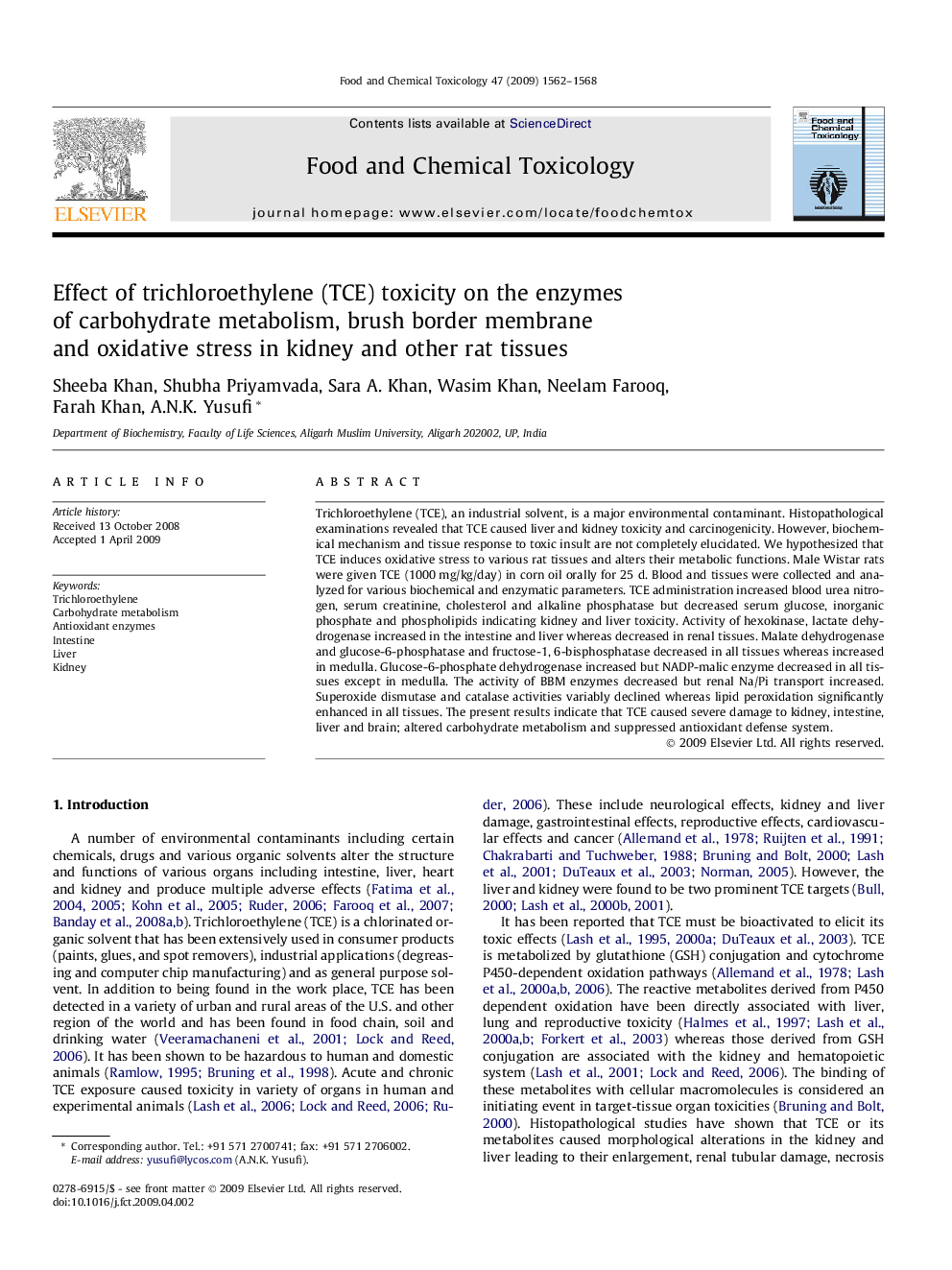| Article ID | Journal | Published Year | Pages | File Type |
|---|---|---|---|---|
| 2586266 | Food and Chemical Toxicology | 2009 | 7 Pages |
Trichloroethylene (TCE), an industrial solvent, is a major environmental contaminant. Histopathological examinations revealed that TCE caused liver and kidney toxicity and carcinogenicity. However, biochemical mechanism and tissue response to toxic insult are not completely elucidated. We hypothesized that TCE induces oxidative stress to various rat tissues and alters their metabolic functions. Male Wistar rats were given TCE (1000 mg/kg/day) in corn oil orally for 25 d. Blood and tissues were collected and analyzed for various biochemical and enzymatic parameters. TCE administration increased blood urea nitrogen, serum creatinine, cholesterol and alkaline phosphatase but decreased serum glucose, inorganic phosphate and phospholipids indicating kidney and liver toxicity. Activity of hexokinase, lactate dehydrogenase increased in the intestine and liver whereas decreased in renal tissues. Malate dehydrogenase and glucose-6-phosphatase and fructose-1, 6-bisphosphatase decreased in all tissues whereas increased in medulla. Glucose-6-phosphate dehydrogenase increased but NADP-malic enzyme decreased in all tissues except in medulla. The activity of BBM enzymes decreased but renal Na/Pi transport increased. Superoxide dismutase and catalase activities variably declined whereas lipid peroxidation significantly enhanced in all tissues. The present results indicate that TCE caused severe damage to kidney, intestine, liver and brain; altered carbohydrate metabolism and suppressed antioxidant defense system.
